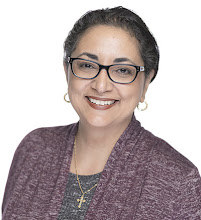Second Day at the AT Spring Meeting
I managed to sit in on the Privacy & Security committee's second session of the meeting on "Preventing, Confronting and Controlling Security Breaches and Identity Theft." We heard from Julie Brill of the Vermont OAG, FTC Commissioner Jon Leibowitz, and Jessica Rich of the FTC on current and pending federal and state legislation addressing the growing problem of unauthorized data access. This is a topic I'm especially interested in given my IT background. An interesting question was raised about protecting against the possible misuse of public information, such as freely available detailed satellite maps of neighborhoods. Could criminals use that information to harm someone's children? Well, I'm no authority on the subject, but it did remind me that our appraisal district in Houston recently discontinued making residential floor plans available through their website because they were concerned criminals could use the information to "optimize" their burglary plans. Of course, as Ms. Brill mentioned during the session, kids are divulging much more sensitive information voluntarily through sites such as myspace.com, that many parents may not even be aware of. I have to agree, the next generation has very different ideas of what should be private v. public information. Naivete or a true paradigm shift? We shall see...
Afterwards, I managed to catch the last hour, and, apparently, the best part of the mock trial presented by the Trial Practice Committee. This was a Rule of Reason trial between a fictional interior design firm and a joint venture formed between a traditional "bricks and mortar" company and on-line retailer. After examination of experts and fact witnesses, which included drugstore.com VP Alesia Pinney and amazon.com Associate GC David Zapolsky, the jurors were sent back for deliberations while the audience watched on closed-circuit TV. If you ever wanted to be a fly on the wall of a jury room this was the next best thing. Not only did it give the audience a glimpse of what jurors think is most important (e.g., they're more likely to follow written instructions if it's too hard to remember what the judge asked them to do - so make sure the written instructions make sense!), it was also amusing to hear their opinions on what it takes for a plaintiff to prove their case, the impressions economics experts leave, and whether jurors are really susceptible to or suspicious of those subliminal powerpoints (more likely the latter). I doubt I'll forget the "faux case" about the "Wal-Mart of faux art" anytime soon.
We wrapped up the evening with some great receptions ahead of the Spring Dinner, thanks to the kind folks at Bates White, Crowell & Moring, and Howrey.




